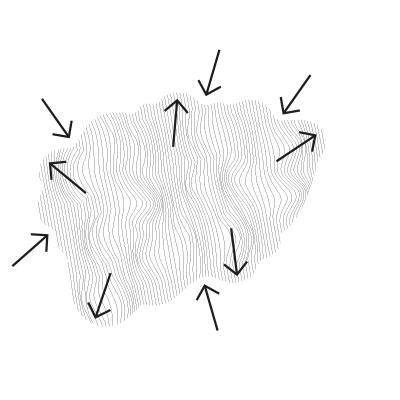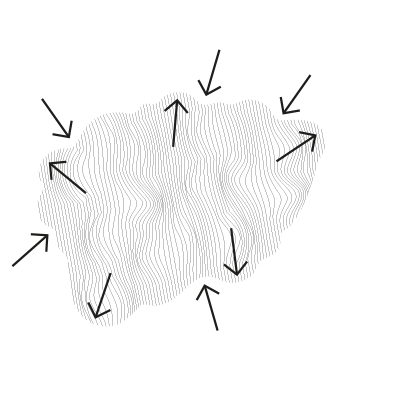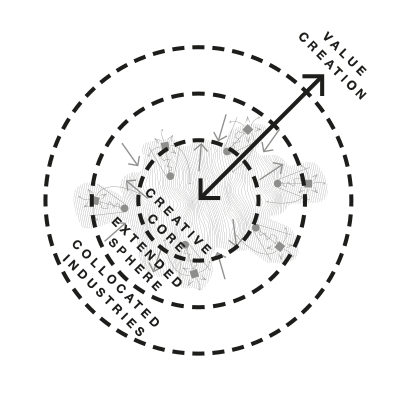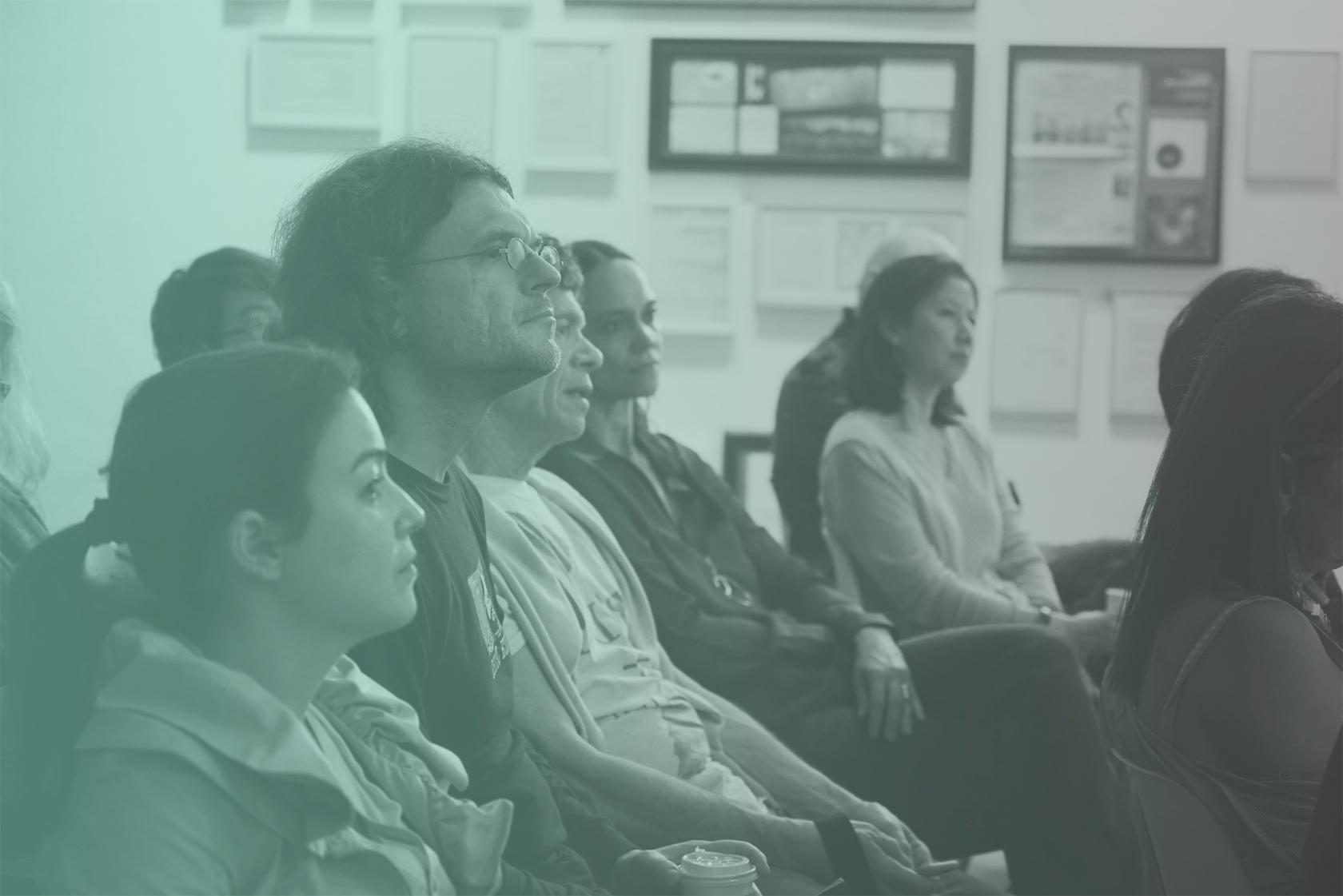CreativeEconomies Venture
CreativeEconomies is a venture by ZHdK in collaboration with RISE Management Innovation Lab, University of St. Gallen and the Critical Thinking Initiative, ETH Zurich. This venture curates experiments, projects and initiatives that design and investigate new opportunities for value creation across global networks. Thereby, this not for profit venture develops and debates valuation devices for cultural, technological and economic performance.

About us
This presentation has been developed along of a series of workshops in Venice, Hong Kong, Zurich and London with the idea of reframing the Cultural and Creative Industries to develop “creative economies”.
Simon Grand, a strategy designer, knowledge entrepreneur and management researcher. Professor for Strategic Management at the University of St. Gallen. Research fellow at the Zurich University of the Arts.
Christoph Weckerle, Head of the Department of Cultural Analysis at Zurich University of the Arts. Researcher in the field of cultural policy and creative economy.
IntroductionWhy Reframing the Cultural and Creative Industries
Developing new scenariosBased on our research and practice, we come to the conclusion that traditional perspectives on the Cultural and Creative Industries need to be reviewed and new scenarios developed. The still widespread transfer-oriented approaches of the old industries to the Cultural and Creative Industries, or inside-outside views on the delimitation of the Cultural and Creative Industries as a complex of industrial sectors have reached their limits.
Such approaches indeed put the Cultural and Creative Industries on the agenda of politicians and decision makers, but many artists and designers don’t understand themselves as part of traditional economies. Only new approaches will help render fruitful both the high innovation potential and also the entertainment qualities, the forms of knowledge and the critical resources.
The approach
Our joint research blends the expertise and perspectives of an art university and a business university. Furthermore, it combines a macro- and a micro-perspective. We are studying geographies, institutions and cities on the one hand, creative actors, networks and organizations and their practices and processes on the other.
Structure of the presentation
International approach
The lecture was developed in an iterative process and was held in the the context of public workshops and panels in Europe and Asia. This presentation shows the current status of the research and is divided in two parts:
#1 Why reframing?
The first part focuses on why reframing the Cultural and Creative Industries is crucial and how a shift from a macro perspective to a micro perspective on artistic processes and practices can be initiated.
#2 Creative Economies
The second part introduces the new focus we propose: the approach “creative economies”. And it explains why curating is a promising practice of dealing with the multiple uncertainties in these economies.
The concept of the Cultural and Creative Industries is modelled
and visualized differently in different regions of the world.
The main purpose of the models is to reduce complexity.
Singularity vs. mainstream
This means tolerating complexity. What we observe are force fields. One of the main drivers of Cultural and Creative Industries is the force field “singularity vs. mainstream”.
Every artist, every designer wants to be unique and distinctive; they want to do something no one else has done before. On the other hand they want to have access to the market and this is where the mainstream element comes in. The audience has to get information about the singularity, wants to buy more than one of a kind, wants to compare it to other products / pieces of arts, wants to know how much it costs, … .
Other characteristic force fields are: formal – informal, public – private; for profit – not for profit, tradition – innovation. What these force fields have in common is that they don’t follow a neither nor-logic but more a both and-logic. It’s not singularity or mainstream. It’s always both. Taking the notion of these force fields seriously means not only expanding but also focusing. This means a shift from the question “What belongs to the Cultural and Creative Industries? How to measure the impact of the Cultural and Creative Industries?” towards “Who is the Cultural and Creative Industries? What are creative actors doing and why?”

In our research and practice, we thus explore the activities and processes characterizing the practices of individuals, networks and organizations in the Cultural and Creative Industries in greater detail and from a micro perspective.
A micro perspective on creation practices
From a micro perspective, it is important to note that while politicians and statisticians discuss the Cultural and Creative Industries as an important phenomenon, the creative actors in the field do not see themselves as part of the Cultural and Creative Industries:
They run design agencies, realize films, engage in performances, develop computer games. Hence zooming-in implies that the cultural, political and economical debates about the Cultural and Creative Industries move into the background, and what we see instead is a multitude of highly idiosyncratic practices, initiatives and related modes of organizing and managing artistic processes.
Specifically, we observe a recurrent insistence on the singularity of these practices, which requires an in-depth involvement, in order to understand them in their specificity and context-dependence. At the same time, it is central, although provocative, to generalize these practices and and to identify general patterns.
We identify six practices, which are characteristic of creative and artistic initiatives and enterprises:
| Six creation patterns |
|---|
| 1. Projecting |
| 2. Materializing |
| 3. Judging |
| 4. Experimenting |
| 5. Organizing |
| 6. Connecting |
Our finding
At the various panels, designers, curators, architects, urban planners, and entrepreneurs agreed that traditional approaches to governance and management reach their limits in the creative economies.After having gone into the details of artistic practices and strategies at the end of the first video, we now zoom out again and ask ourselves if and how all this relates to other areas of knowledge and production like for example technology or economy but also to the intersections and their multiple interplays with culture. Are there creative enterprises outside the Cultural and Creative Industries in the strict sense?

Let us think of a designer working on a gamification strategy for a bank’s new customer generation. He works closely with a software developer and the client is the Swiss Banking Association. Or let’s think of pharmaceutical lab doing research on portable x-ray equipment. They collaborate intensively with entrepreneurship specialists developing an accurate business model for the client, which is a UN agency.
Therefore we have claimed the notion of Creative Economies – not to be mixed up with the concept of creative economy.
We are convinced the traditional ways of
governance or management have reached their limits.
Curating as alternative to governance
In order to be operative within and across the different spheres of the Creative Economies, as well as to deal with the inherent uncertainties implied in creating alternatives to the world we know, traditional approaches to management and governance do not really work.
As a consequence, we have to explore which organizing practices and processes enable and foster entrepreneurial initiatives in the creative economies instead. Through our discussions on different panels, as well as conversations with various actors in different value creation contexts across cultural, economic and scientific action fields, we can identify four important practices. Thereby, we can recognize that this constellation of practices resonates with what is discussed as curating practices in an art context:
| Four imporant practices |
|---|
| 1. Staging stories |
| 2. Judgement devices |
| 3. Resource mobilization |
| 4. Alternative institutions |
Our finding
..., the element linking the various strands is that curators establish conditions under which the complex exchange processes described above — from “core” through “extended” to “collocated” — may successfully take place. Hence, curators also invent and run organisations, infrastructures, or platforms designed to further develop their own activities.Thank you for your interest.
This presentation has been developed in collaboration with the E-Learning department of Zurich University of the Arts.
To improve future our work we would like to ask you some questions about his presentation.
Please take part in our online survey – it takes just three minutes.


